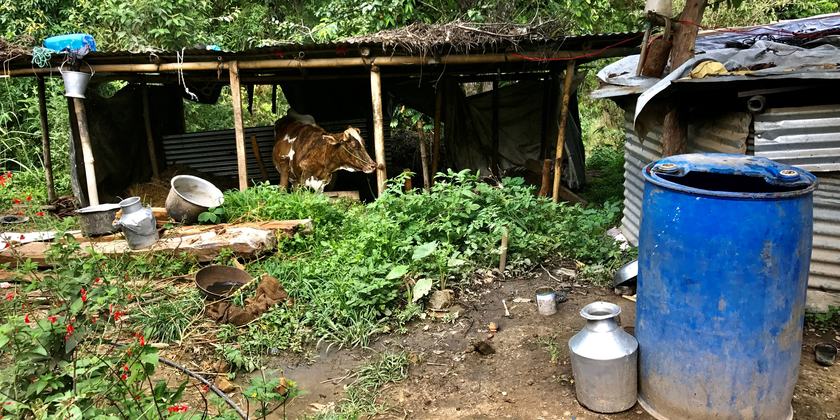Department Sanitation, Water and Solid Waste for Development
Evaluation of Open Defecation Free (ODF) Toilets in Flood-Prone Regions of Nepal

Project Background:
The Open Defecation Free (ODF) concept started with the introduction of Community-Led Total Sanitation (CLTS) in Nepal. From 2000 to 2010, sanitation coverage in Nepal has improved from 27% to 43% due to the introduction of sanitation initiatives like the ODF movement, and this coverage further increased to >97% in 2019. On September 30, 2020, all 77 districts in Nepal were declared free from open defecation. However, several reports about the sub-par quality of the constructed toilets in the Terai districts raise questions about its long-term sustainability. Furthermore, extreme weather events like flooding, which is quite common in the region, pose additional risks. Flooding events can make toilets partially or entirely unusable, forcing the residents to open defecate in the fields. Overflowing of the pits or leaching of fecal matter in the groundwater also can cause diarrheal diseases outbreak during such events. Therefore, the provision of suitable and safe sanitation facilities that are low-cost and socially and culturally acceptable still remains a challenge in flood-prone regions. In this study, we propose to study the sustainability of toilets constructed during the ODF campaigns in the Terai region and the impact of extreme weather events on toilet use.
Project Justification:
Extreme natural events (ENEs) cause tens of thousands of deaths annually and billions of dollars in damage worldwide. In addition, changes in global climate worsen climate hazards and increase the frequency of extreme weather disasters like flooding. The aftermath of ENEs often exposes a population to severe water insecurity and suboptimal sanitation conditions that adversely affect human health and welfare. ENEs are also known to alter human behavior, which can impact vulnerability at the individual and societal levels. Furthermore, societal inequalities in the level of access often account for higher loss associated with disasters, and vulnerability measurements are recognized as key components to facilitate resilience in such events. The local environmental conditions can heavily limit the implementation of on-site sanitation technologies, especially in areas subject to natural flooding. And the absence of suitable sanitation technologies for floodable environments has a negative impact on community health, mainly affecting the marginalized population. Despite all these obstacles, all 77 districts met the national requirement and were declared open defecation-free. This study evaluates the quality of constructed toilets, toilet use, and toilets' sustainability during the flooding seasons. Most of the Terai region districts were the last ones in the campaign to be declared open defecation-free, and the implementers have also presented their concern about the sustainability of toilets constructed towards the end. Therefore, it is of utmost importance to ensure that these communities have access to proper and usable sanitation technology to ensure public health protection.
Project Status:
The study will be conducted in four districts in the Terai region, Rautahat, Siraha, Sarlahi, and, Saptari. The ongoing first phase of the study includes collecting and analyzing secondary data on toilets design, the number of toilets constructed, leaching risks, source water proximity in the districts mentioned above. In addition, the data on ODF toilets from the Department of Water Sewage and Supply (DWSS), regional or governments, or survey databases like Multiple Indicative Cluster Surveys (MICS) are being collected. The second phase, which is running in parallel with the first phase, includes surveys on selected households on toilet use, hygiene behavior, and health hazards related to diarrheal diseases. The survey questionnaire is being designed, and it will be conducted in early August 2021. The project's third phase will include water quality testing around the survey households for possible fecal indicators using Compact Dry plates.
Expected Outputs and Impacts:
Results from our findings are critical for understanding the current and future state of ODF toilets in vulnerable areas in Nepal. This study's knowledge can help decision-makers make informed decisions on appropriate sanitation technologies and their design in different scenarios. Finally, using the fecal indicator test and health data from the region, we can identify and quantify low-quality latrines' health hazards.
